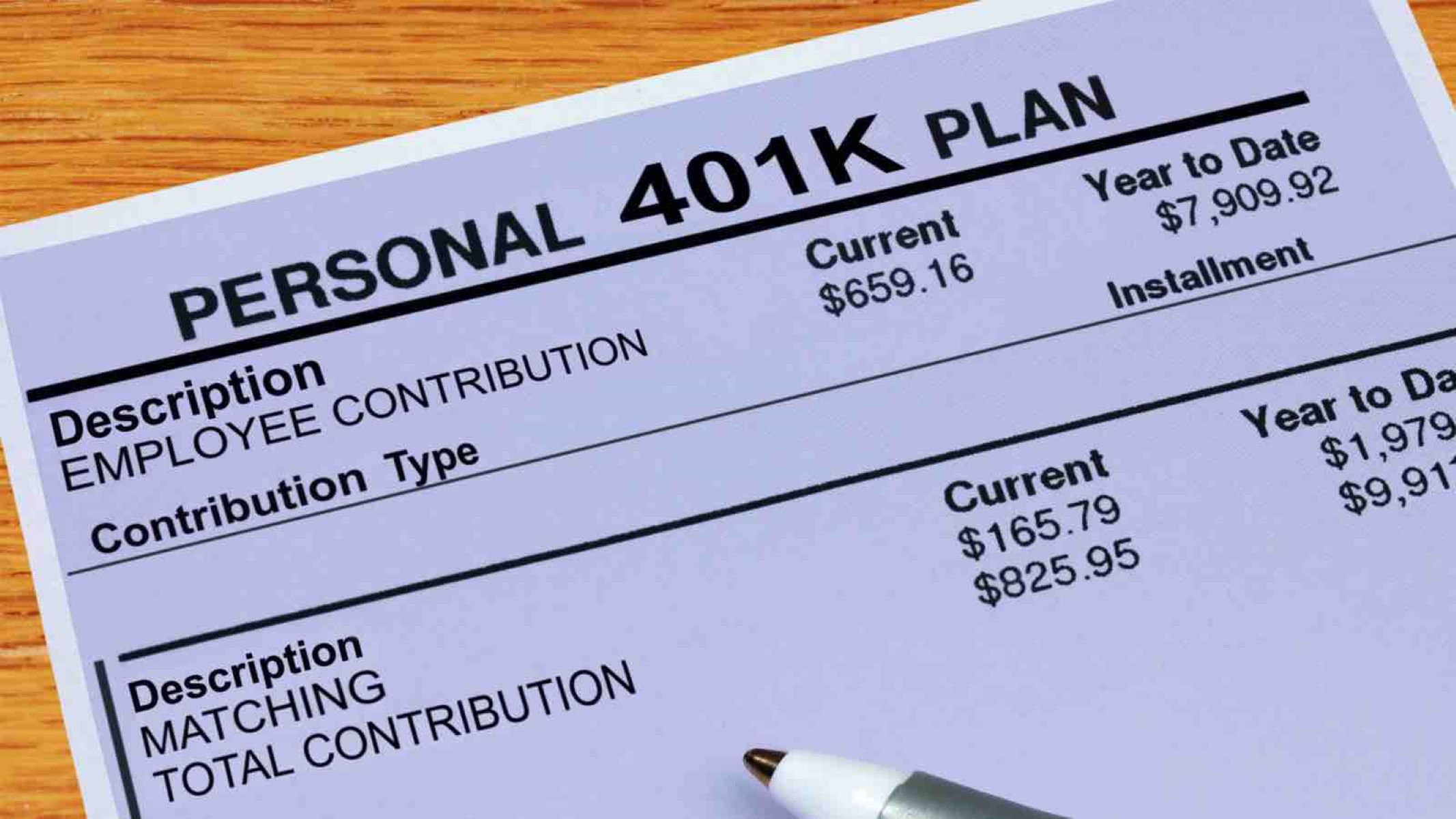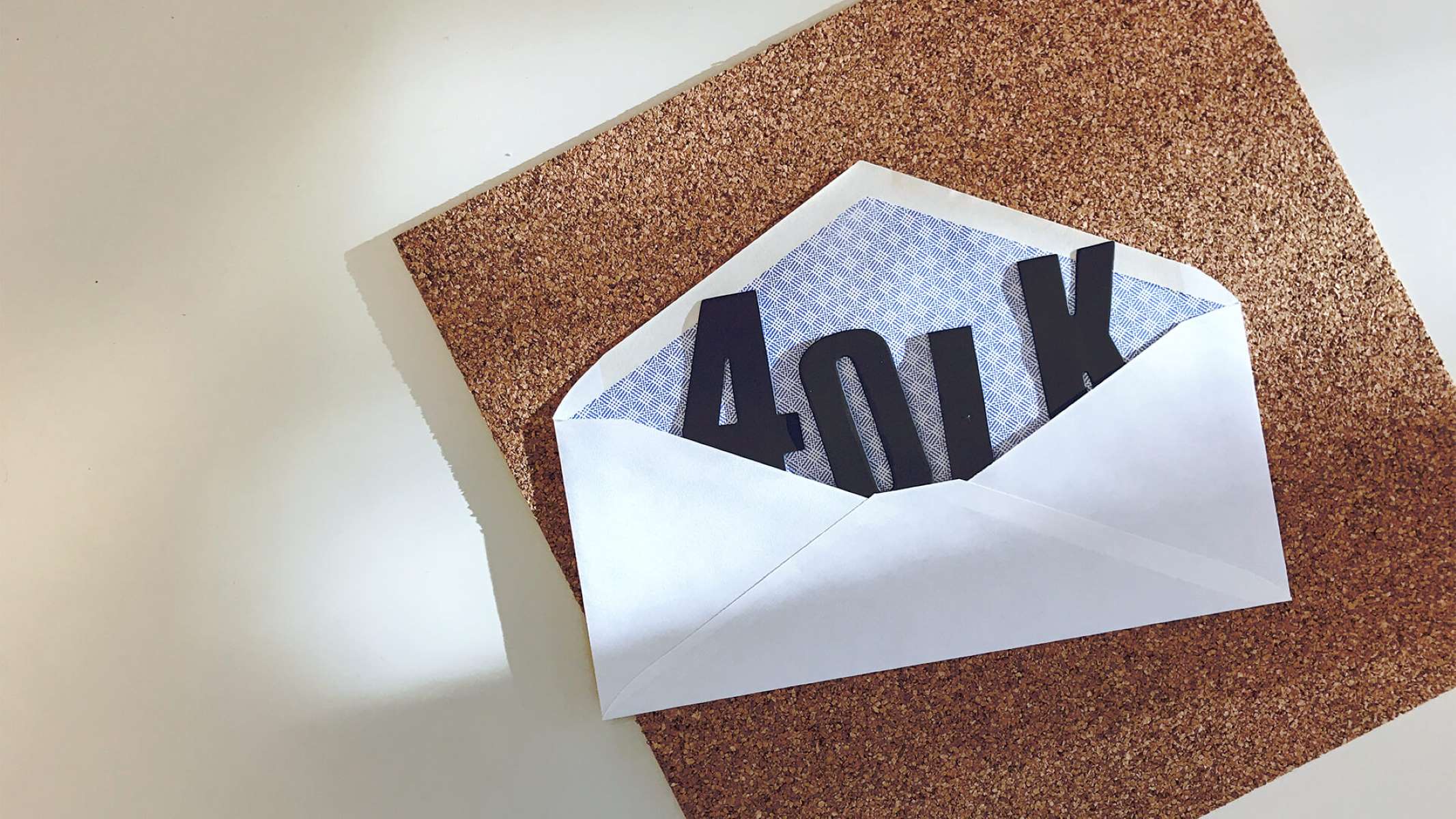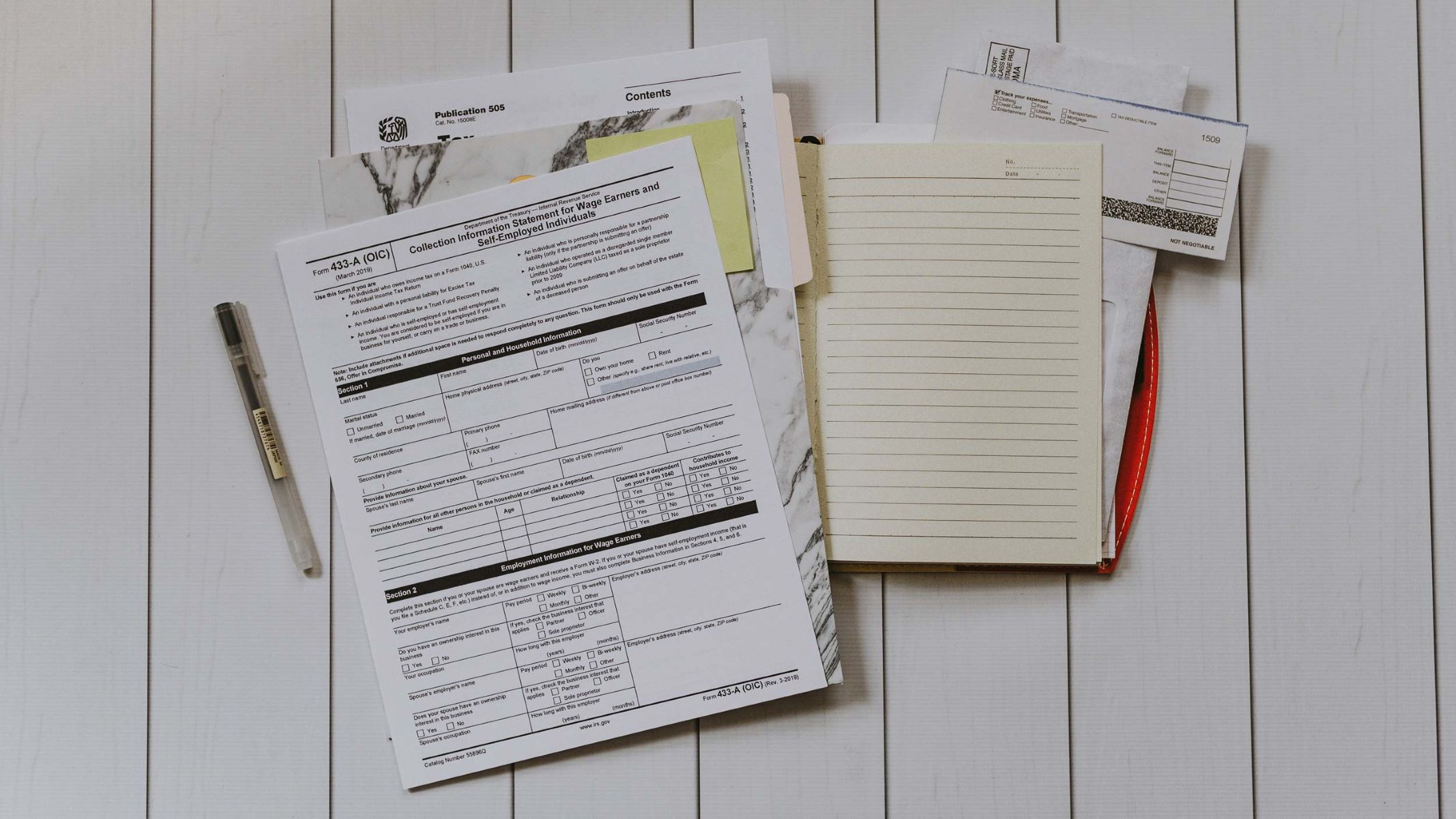Home>Finance>How To Report Solo 401K Contributions On Your Tax Return


Finance
How To Report Solo 401K Contributions On Your Tax Return
Modified: December 30, 2023
Learn how to report Solo 401K contributions on your tax return and optimize your finances with this helpful guide from the experts at [Your Company Name].
(Many of the links in this article redirect to a specific reviewed product. Your purchase of these products through affiliate links helps to generate commission for LiveWell, at no extra cost. Learn more)
Table of Contents
- Introduction
- Understanding Solo 401K Contributions
- Deducting Solo 401K Contributions on Schedule C
- Reporting Solo 401K Contributions on Form 1040
- Completing Form 5500-EZ for Solo 401K Plan
- Reporting Solo 401K Contributions on State Tax Return
- Additional Considerations for Solo 401K Contribution Reporting
- Conclusion
Introduction
Welcome to our comprehensive guide on how to report Solo 401K contributions on your tax return. As a self-employed individual or small business owner, you have taken the initiative to secure your future by setting up a Solo 401K plan. This retirement account provides you with the flexibility to invest and accumulate savings for your golden years. However, it’s crucial to understand the tax implications and reporting requirements associated with Solo 401K contributions.
While contributing to your Solo 401K is relatively straightforward, correctly reporting these contributions on your tax return can be a bit more challenging. It’s important to accurately document your contributions to maximize your retirement savings and ensure compliance with the IRS guidelines.
In this guide, we will walk you through the necessary steps to report your Solo 401K contributions on your tax return. We’ll cover everything from deducting contributions on your Schedule C to completing Form 5500-EZ for your Solo 401K plan. We’ll also touch on how to report your contributions on your state tax return and address any additional considerations you should be aware of when reporting Solo 401K contributions.
By understanding and following these reporting guidelines, you can ensure that you receive the maximum tax benefits from your Solo 401K contributions and avoid any potential penalties or audits from the IRS.
Let’s dive into the details of reporting Solo 401K contributions and ensure that you have all the information you need to successfully navigate the tax reporting process.
Understanding Solo 401K Contributions
Before we delve into the process of reporting Solo 401K contributions on your tax return, it’s essential to have a clear understanding of what these contributions entail.
A Solo 401K, also known as an Individual 401K or Self-Employed 401K, is a retirement savings plan specifically designed for self-employed individuals and small business owners who have no employees, other than a spouse. This type of retirement account offers unique advantages, allowing individuals to contribute both as an employer and an employee.
As the employer, you can make contributions on behalf of your business, while as the employee, you can contribute a portion of your self-employment income. This dual contribution structure enables you to potentially save more for retirement compared to other retirement plans available for self-employed individuals, such as a SEP IRA or a SIMPLE IRA.
For the year 2021, the contribution limit for a Solo 401K is $58,000 or 100% of your self-employment income, whichever is less. This limit includes both employer and employee contributions. If you are age 50 or older, you may also be eligible to make catch-up contributions of up to $6,500, bringing the total contribution limit to $64,500.
It’s important to note that the contributions you make to your Solo 401K are pre-tax, meaning they are deducted from your taxable income. This allows you to reduce your current tax liability and defer taxes until you begin withdrawing funds from your account during retirement.
Furthermore, Solo 401K plans often offer a range of investment options, including stocks, bonds, mutual funds, real estate, and even alternative investments. This flexibility allows you to diversify your retirement portfolio and potentially maximize your returns over time.
Now that we have a clear understanding of what Solo 401K contributions entail, let’s explore the process of deducting and reporting these contributions on your tax return.
Deducting Solo 401K Contributions on Schedule C
One of the key benefits of contributing to a Solo 401K plan is the ability to deduct these contributions from your taxable income. This deduction can help lower your overall tax liability and increase your retirement savings. To do so, you’ll need to report your Solo 401K contributions on Schedule C of your tax return.
Schedule C is the form used to report business income and expenses for self-employed individuals. It is generally attached to your Form 1040 or Form 1040-SR. When reporting your Solo 401K contributions on Schedule C, you’ll need to calculate the deductible portion based on your contribution as the employer.
As the employer, you can contribute up to 25% of your self-employment income to your Solo 401K plan. This calculation is subject to certain limitations, such as the overall contribution limit of $58,000 or 100% of your self-employment income, whichever is less.
To calculate the deductible portion, multiply your self-employment income by the employer contribution percentage. For example, if your self-employment income is $100,000 and you contribute 20% as the employer, the deductible amount would be $20,000.
Once you have determined the deductible portion, you will report this amount on Line 19 (Profit Sharing Plans) of Schedule C. Make sure to specify that the contribution is for a Solo 401K.
Remember to keep detailed records of your Solo 401K contributions, including the dates and amounts contributed, as well as any documentation provided by your plan administrator. These records will be essential in case of an IRS audit or to resolve any discrepancies that may arise.
By accurately calculating and reporting your Solo 401K contributions on Schedule C, you can maximize your tax deductions while complying with IRS regulations.
Next, let’s move on to how to report your Solo 401K contributions on Form 1040, the individual tax return form.
Reporting Solo 401K Contributions on Form 1040
After deducting your Solo 401K contributions on Schedule C, you’ll need to report these contributions on your individual tax return using Form 1040. Form 1040 is the main form used by individuals to file their federal income tax return.
When reporting your Solo 401K contributions on Form 1040, you’ll need to complete the relevant sections to accurately reflect your retirement savings. Below are the steps to follow:
- On the first page of Form 1040, report your total income from all sources, including your self-employment income.
- Move to the “Deductions” section of Form 1040 and enter the deductible portion of your Solo 401K contributions on Line 10b. This amount should align with the deduction you claimed on Schedule C.
- Make sure to provide additional information about your Solo 401K contributions by attaching Form 8959, Additional Medicare Tax, if applicable. This form includes a section to report any employer contributions made to a self-employed retirement plan.
- If you made any after-tax Roth contributions to your Solo 401K, you’ll need to complete Form 8606, Nondeductible IRAs, to report these contributions on your tax return.
- Lastly, review your Form 1040 to ensure that all information related to your Solo 401K contributions is accurate and complete.
It’s important to note that if you are contributing as both the employer and the employee, you’ll need to separate these contributions on your tax return. The employer contributions should be reported on Schedule C and Form 1040, while the employee contributions should be reported on Form 1040. This ensures that the appropriate deductions and tax benefits are applied to each portion of your contributions.
As always, it’s recommended to consult with a tax professional or utilize tax software when completing your Form 1040 to ensure accuracy and compliance with IRS guidelines.
Next, let’s discuss how to complete Form 5500-EZ for your Solo 401K plan.
Completing Form 5500-EZ for Solo 401K Plan
As a participant in a Solo 401K plan, you may be required to file Form 5500-EZ, Annual Return for One-Participant (Owners and Their Spouses) Retirement Plan. This form provides information about your Solo 401K plan to the IRS and the Department of Labor.
Completing Form 5500-EZ for your Solo 401K plan involves providing basic details about your plan, such as the plan administrator, plan name, and plan year. This form also requires you to report any assets held by the plan, as well as any contributions made during the year.
Here are the essential steps to complete Form 5500-EZ for your Solo 401K plan:
- Enter your identifying information, including your name, address, and employer identification number (EIN).
- Provide details about your plan, such as the plan name, plan number, and the type of plan (defined contribution).
- Fill out the plan administrator’s information, including their name, address, and EIN.
- Indicate the applicable plan year for the form.
- Report the total value of your plan’s assets at the beginning and end of the plan year.
- Enter the total contributions made to the plan during the year, including both employee and employer contributions.
- Specify if any distributions were made from the plan during the year and report the total amount.
- Provide additional information, such as the number of participants covered by the plan.
- Review the completed Form 5500-EZ for accuracy and ensure all sections are complete.
It’s important to note that filing Form 5500-EZ is generally required if the total value of the plan’s assets exceeds $250,000 at the end of the plan year. However, it’s always recommended to consult with a tax professional or plan administrator to determine your specific filing requirements.
By completing and filing Form 5500-EZ for your Solo 401K plan, you fulfill your reporting obligations to the IRS and ensure compliance with the regulations for one-participant retirement plans.
Next, let’s discuss how to report your Solo 401K contributions on your state tax return.
Reporting Solo 401K Contributions on State Tax Return
When it comes to reporting Solo 401K contributions on your state tax return, the process may vary depending on the state in which you reside. Each state has its own tax laws and regulations, so it’s important to familiarize yourself with the specific requirements related to retirement plan contributions.
In general, the majority of states follow federal tax rules when it comes to deducting Solo 401K contributions. This means that if you have already deducted your contributions on your federal tax return, you can generally apply the same deduction on your state tax return.
However, some states may have their own guidelines or limitations regarding the deductibility of retirement plan contributions. They may offer different deduction limits, phase-outs, or additional requirements. It’s important to consult the tax regulations and guidelines specific to your state to ensure accurate reporting.
When preparing your state tax return, follow these steps to report Solo 401K contributions:
- Review the instructions and guidelines provided by your state’s tax authority regarding retirement plan deductions.
- Enter your total income from all sources, including self-employment income, on the appropriate line of your state tax return.
- If your state allows the deduction of Solo 401K contributions, enter the deductible portion of your contributions on the designated line or section of your state tax return. Ensure that the deduction aligns with the amount claimed on your federal tax return.
- Check if your state requires any additional documentation or forms to support your Solo 401K contribution deduction. Attach any required forms or statements that prove the eligibility and accuracy of your deduction.
- Review your state tax return to ensure that all information related to your Solo 401K contributions is accurately reported.
Remember, each state may have its own specific rules and regulations, so it’s crucial to research and understand your state’s requirements to ensure compliance and accurate reporting.
Now that we have covered reporting Solo 401K contributions on your state tax return, let’s discuss some additional considerations when reporting these contributions.
Additional Considerations for Solo 401K Contribution Reporting
While we have covered the primary steps for reporting Solo 401K contributions on your tax return, there are a few additional considerations to keep in mind to ensure accurate and compliant reporting:
1. Contribution Deadline: It’s important to remember that the deadline for making Solo 401K contributions for a specific tax year is typically the due date of your tax return, including extensions. Make sure to contribute to your plan before the deadline to maximize your tax deductions and retirement savings.
2. Contribution Limits: Double-check that your Solo 401K contributions do not exceed the annual contribution limits set by the IRS. For the year 2021, the maximum contribution is $58,000 or 100% of your self-employment income, whichever is less.
3. Solo 401K Loan Repayments: If you have taken a loan from your Solo 401K plan, ensure that you are accurately reporting the loan repayments on your tax return. These repayments are not considered contributions and should not be included when deducting your Solo 401K contributions.
4. Roth Solo 401K Contributions: If you have made after-tax Roth contributions to your Solo 401K, remember to separately report these contributions on your tax return. Roth contributions are not deductible, but they provide tax-free withdrawals during retirement.
5. Correct Reporting Forms: Ensure that you are using the correct forms and schedules when reporting Solo 401K contributions. Using the wrong forms or omitting crucial information may result in errors or delays in processing your tax return.
6. Seek Professional Advice: If you have any doubts or complex financial situations related to your Solo 401K contributions, it’s advisable to consult a tax professional or financial advisor who can provide personalized guidance based on your specific circumstances.
By considering these additional factors, you can accurately report your Solo 401K contributions and avoid potential discrepancies or issues with the IRS.
Now that we have covered all the important aspects of reporting Solo 401K contributions, let’s conclude our comprehensive guide.
Conclusion
Congratulations on taking the proactive step of setting up a Solo 401K plan to secure your retirement future as a self-employed individual or small business owner. Reporting your Solo 401K contributions correctly on your tax return is crucial to maximize your tax deductions and ensure compliance with IRS regulations.
In this guide, we covered the key steps involved in reporting Solo 401K contributions. We discussed deducting contributions on Schedule C, reporting contributions on Form 1040, completing Form 5500-EZ for your Solo 401K plan, reporting on state tax returns, and additional considerations for accurate reporting.
Remember to keep detailed records of your Solo 401K contributions, including documentation provided by your plan administrator. This will help you in case of an audit or to resolve any discrepancies that may arise.
If you encounter any complexities or have specific questions about reporting your Solo 401K contributions, it’s always recommended to seek professional guidance from a tax advisor or financial planner.
By understanding and following the reporting guidelines provided in this guide, you can ensure that you receive the maximum tax benefits from your Solo 401K contributions while staying on the right side of the IRS.
As always, it’s important to stay updated with any changes in tax laws and regulations that may affect your Solo 401K contribution reporting. By staying informed and diligently fulfilling your reporting obligations, you can continue to grow your retirement savings and work towards a financially secure future.
Now you’re armed with the knowledge you need to confidently report your Solo 401K contributions on your tax return. Good luck, and here’s to a prosperous and rewarding retirement journey!














